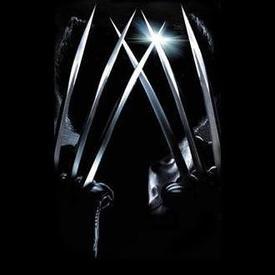Tell me all about beer

KatieMae75
Posts: 391 Member
I'm not a beer drinker. At all. Whiskey is another story though. Anyway, I'm cooking a recipe that called for dark beer today. I stood in the store and realized I had no idea what a dark beer was. There were lagers and ales, but nothing that said dark. I picked up a dark bottle, but decided that didn't mean it was a dark beer. Then I picked up an ale, but in my head, ale sounded like pale, so I put that one down too. I asked a guy who worked there. He couldn't help me, nor could the guy he went and asked. In the end, I grabbed Arrogant *kitten* Ale. I'm still not sure I have a dark beer. So, explain beer to me. What constitutes dark? What is the difference between ale and lager?
0
Replies
-
There are dark and light ales and lagers. It all comes down to brewing temp and ingredients. It's easier to Google them both that to explain it here. For cooking it all depends on what you are cooking and finding a beer that compliments the dish. Guinness is never a bad starting point.0
-
A dark beer can be either an ale or a lager. The primary difference between an ale and lager is how they are fermented, and the types of yeast used. Neither is inherently dark or light in color. And dark beers can vary dramatically in how they taste. Dark vs light come from the color imparted by the type of grain that is used in the brew. What are you cooking?0
-
Thanks! It was for slow-cooked corned beef that also has a mountain of other flavors in the pot (brown sugar, Dijon mustard, cider vinegar, crushed cloves, pepper). Onions, cabbage, and apple slices topped the seasoned corned beef, and the beer is poured over that. Sounds like an awful recipe, but the reviews were great. No one specified what type of beer they used.0
-
This content has been removed.
-
OK, so what would be the best dark choice if a person wants the end result to be a subtle beer taste rather than an overpowering one?0
-
I would think most stouts or porters (avoid anything with the word chocolate in the name) would be good in that dish. With the other flavors in that pot you would not want anything too hoppy, and darker beers tend to avoid that. The suggestion of Guinness was a good one.0
-
If I were you I would have grabbed a Guinness. It is common to cook with in many recipes. My bf uses it in his marinade for steak.0
-
Tagging for about 30 friends who know way more about beer than I ever will.
I'm pretty sure that arrogant *kitten* is dark. but your palate may not appreciate it. I hear it's um....kinda serious.0 -
Guinness is never a bad starting point.
This
Also Newcastle Brown Ale works for cooking IMHO0 -
They did have Guinness single bottles, but it said Double Stout or something like that. I didn't know what it meant, so again, I put it back.0
-
Guinness is a stout. For my cooking I use either a stout or a porter depending on the dish.0
-
Guinness is never a bad starting point.
This
Also Newcastle Brown Ale works for cooking IMHO
Hadn't thought of that. Yeah, brown ales could work really well in that dish also.0 -
Easiest thing is going to look for something called stout or porter. That will be the darkest beer.0
-
Arrogant *kitten* is, as the name suggests, a very headstrong beer. It is very hoppy and bitter and I'm not sure it'd be what I chose to cook with (though I love to drink it!). It could easily overpower the other flavors.
[ETA - avoid cooking with anything that says IPA, dry hopped, and even many American Pale Ales. These will be the hoppy beers. Not the best choice unless you really know what you are doing. Save them for drinking.]
Guinness would be a good go-to in cases like this. You want something to impart some beer flavor without the hops taking over. Stouts, Porters, some Ambers would even work (I use Abita's Turbo Dog in my gumbo sometimes). New Belgium's 1554 would probably work too...
A light lager (Bud, Miller, Coors) is as useless for cooking as it is for drinking - might as well just use water.
"Dark" is not a good descriptor for beer all by itself. As other have said, there are a wide range of style that can have a dark color. There is even a new-ish style on the craft scene that is often called a Dark India Pale Ale...0 -
A light lager (Bud, Miller, Coors) is as useless for cooking as it is for drinking - might as well just use water.
If you learn nothing from this thread, learn this tidbit. :drinker:0 -
I've always used a nice porter in recipes that call for dark beer, plenty of flavor.0
-
Arrogant *kitten* Ale is as bitter and dark as it sounds. Good luck.0
-
I would think most stouts or porters (avoid anything with the word chocolate in the name) would be good in that dish. With the other flavors in that pot you would not want anything too hoppy, and darker beers tend to avoid that. The suggestion of Guinness was a good one.
This is my suggestion also!0 -
Guiness is a go-to dark.
For drinking I like Santos by St. Arnold's - a local Houston Brewery.
They always call Shiner Boch a dark beer too, but there is something in it I don't like.
Your pot roast sounds delicious!!0 -
I love pot roast made in beer! yummmmmmmm
 0
0 -
Bass- although I don't like it- it could probably work as well.
some of the Sam's beers are darker- but you'd have to know what you were looking for.
Guiness is definitely the go to though- no questions there!0 -
Oh.....I use Killians Irish Red in my Corned Beef (it's "American Irish" and easy to find)
I don't know where you live but you can try some of these....
http://nj1015.com/top-10-most-popular-irish-beers/0 -
Bass- although I don't like it- it could probably work as well.
some of the Sam's beers are darker- but you'd have to know what you were looking for.
Guiness is definitely the go to though- no questions there!
Bass would be good too.0 -
Guinness is never a bad starting point.
This
Also Newcastle Brown Ale works for cooking IMHO
Hadn't thought of that. Yeah, brown ales could work really well in that dish also.
I generally use New Castle Brown Ale for cooking ... esp in Chili0 -
Link to recipe please :bigsmile:0
-
Defining beers by their hues isn't a sure-fire way to find something you like or want to cook with. I could present you with three beers that are both the same shade of dark brown and they could taste very different (ex: Black IPA, Porter and Abbey Dubbel). The writer of the recipe is probably not terribly familiar with beer, either, and assumed stout = all dark beer. I've seen stout called for for most Irish-American recipes, and in general, stouts can be used in a variety of foods (baked goods, especially!).
For corned beef, stout in the recipe makes sense. In the future, you can at least assume dark beer will generally mean "maltier," or made with more malts. Roasted malts vs. other forms of malts can alter flavor, but for cooking purposes, a dry stout is probably best. So Arrogant *kitten* wouldn't be the BEST bet for the flavor profile the recipe's probably looking for (though it's probably still delicious). Guinness is probably a safe bet.0 -
These days dark beer is more likely to mean stouts or porters, so look for that on the label. You could even go for a dunkel, which is a dark Germanlager, or a schwarzbier, which is another dark German lager but it has a slightly aniseed hint to it.
It really depends what recipe it's going into.
Most good beers will tell you what the flavour is on the label, so go for one that complements your dish.
Stout, as it happens, is a fantastic addition to any chilli.0 -
I'm not a beer drinker. At all.
+1
tagged for education0 -
I LOVE Beer but switched to liquor cause of the calories in it....one or two is okay but when you drink 8-10 lol0
-
<
Cooler full of yuengling we won playing *kitten* lol0
This discussion has been closed.
Categories
- All Categories
- 1.4M Health, Wellness and Goals
- 398.1K Introduce Yourself
- 44.7K Getting Started
- 261K Health and Weight Loss
- 176.4K Food and Nutrition
- 47.7K Recipes
- 233K Fitness and Exercise
- 462 Sleep, Mindfulness and Overall Wellness
- 6.5K Goal: Maintaining Weight
- 8.7K Goal: Gaining Weight and Body Building
- 153.5K Motivation and Support
- 8.4K Challenges
- 1.4K Debate Club
- 96.5K Chit-Chat
- 2.6K Fun and Games
- 4.8K MyFitnessPal Information
- 11 News and Announcements
- 21 MyFitnessPal Academy
- 1.5K Feature Suggestions and Ideas
- 3.2K MyFitnessPal Tech Support Questions


















